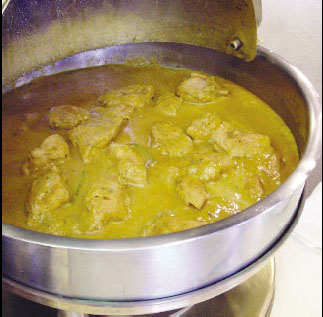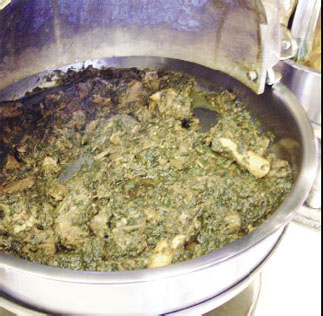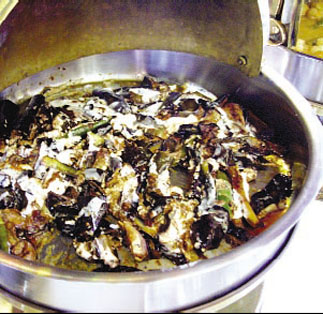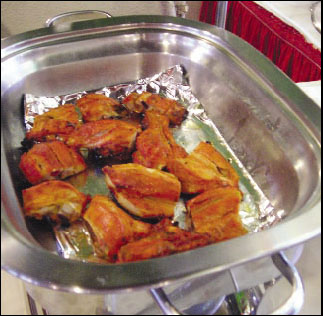Indian meat dishes flavorful, not cheap at Ashoka

Mutton roganjosh
One of the restaurant’s standout features is its totally exposed kitchen. Upon stepping through Ashoka’s threshold, patrons can’t miss the fishbowl-like display of the cooks stacking up rounds of naan (white-flour flatbread) or threading skewers of chicken into the tandoor, a traditional charcoal-fueled clay oven. Feel free to stare ― the kitchen’s immaculate steel surfaces gleam and the kitchen staff is completely unfazed.

Palak panir
Chances are you won’t have to wait long for a table, but if you do spend time pressed against the glass window, the sight of food mingling with the rich aromas of the restaurant will work up an appetite. Buffet-happy Koreans will enjoy Ashoka’s well-labeled offerings that are well-represented on the pages of its menu. Dishes like mutton palak, a meat dish with an onion, tomato and chili-based sauce and a succulent butter chicken are available, as well a wide offering of vegetarian specialties like panak panir, or cottage cheese mixed with creamy, spiced spinach. The buffet also includes a spread of chutneys, yogurts and sauces to accompany the main dishes, varying rice pilafs (depending on the day) and desserts such as gulab jamun, which are sweet pastry balls made from dried milk. The only downside of the buffet is its steep price: weekday lunch is 20,000 won ($21.70), weekend lunch is 24,000 won and weekend dinner is 28,000 won. Shah says the price is all-inclusive, but some past patrons on online message boards have complained about additional VAT and service charges, which are printed in the menu.
While ordering a la carte is a bit cheaper than the buffet, listed prices remain high. In order to eat a proper Indian meal balanced with one of Ashoka’s many specialty breads and rices, don’t expect to spend less than 20,000 won per person. Rice and all other extras are priced a la carte, and one would be doing the restaurant’s excellent main courses a disservice by not ordering at least one naan and a serving of rice. While the plain boiled rice is most economical at 2,000 won, reading descriptions of their assorted pilafs, such as the ashoka pilaf, fried with assorted vegetables and homemade cottage cheese sauce, makes one wistful for a fistful of won.
The same goes for the plain naan and roti, or wheat-based flatbread. While the two are standard staples of any Indian meal, Ashoka’s extensive bread listing makes them seem positively bland. Why choose plain naan when paneer kulcha, or tandoori-baked cottage cheese-stuffed flatbread, cost a mere 500 won more? Your best bet is to come with a gaggle of friends who will order different entrees and split rice and bread, which will give you a sufficient sampling of the menu ― and hopefully rescue your wallet, if ever so slightly.

Baigan bharta

Tandoori chicken
Ashoka Indian Restaurant
English: On the menu, spoken
Tel: (02) 792-0117
Address: Third floor, Hamilton Hotel, 119-25 Itaewon-dong
Subway: Itaewon Station, line No. 6
Parking: Available at hotel
Hours: 12 to 3 p.m., 6 to10:30 p.m.
Dress: Come as you are
Web site: www.ashoka.co.kr
By Hannah Bae Contributing Writer [hannahbae@gmail.com]










with the Korea JoongAng Daily
To write comments, please log in to one of the accounts.
Standards Board Policy (0/250자)